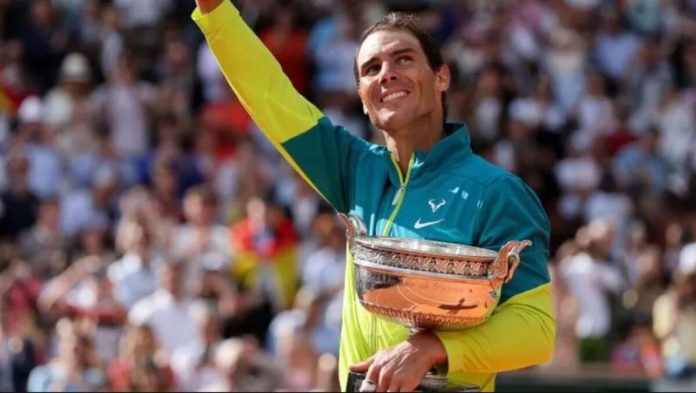Rafael Nadal: What is Mueller-Weiss syndrome, troublesome…
- June 7, 2022
- 0
GETTY IMAGES “It’s clear that I can’t continue playing in the conditions I’m in.” This was one of Rafael Nadal’s strong statements after he was crowned Roland Garros
GETTY IMAGES “It’s clear that I can’t continue playing in the conditions I’m in.” This was one of Rafael Nadal’s strong statements after he was crowned Roland Garros

“It’s clear that I can’t continue playing in the conditions I’m in.”
This was one of Rafael Nadal’s strong statements after he was crowned Roland Garros champion on Sunday, and he managed to win this tournament despite playing with a completely numb foot.
The 36-year-old Spanish tennis player received multiple injections during the competition, where she won her 22nd Grand Slam title.
But he said he doesn’t want to continue playing if he continues to need anesthesia to numb the pain from a chronic problem in his left foot.
But what exactly is Nadal’s problem with his foot and how can he fix it?
The 14-time Roland Garros champion suffers from what is known as Mueller-Weiss Syndrome.
This is a rare degenerative condition that affects one of the bones in his foot, causing him to limp at the Rome Masters (formerly known as the Italian Open) 10 days before the start of Roland Garros.
The syndrome affects the navicular bone (also called the tarsal scaphoid of the foot), which is part of the tarsus, a small bone with 6 faces.
This bone receives various pressures and loses vascularization – that is, blood flow – for unknown reasons, and this produces attacks of necrosis that weaken the bone.
In the most severe cases and “in people who put too much pressure on the foot, the bone breaks down, flattens, can break apart and turn into osteoarthritis,” said Didier Mainard, President of the French Society of Foot Surgery. Director of orthopedic surgery at Hopital Nancy in France.
In short, the problem wears out the bone and causes intense pain in the back of the foot.
The syndrome can affect one or both feet and is more common in women than men, usually between the ages of 40 and 60.
Nadal first began showing symptoms during the Madrid Masters tournament in 2005, and later, after a series of tests, he was diagnosed with the syndrome, which he has struggled with ever since.
“I was playing with nerve injections to numb my foot and that’s why I was able to play for these two weeks,” Nadal said after beating Norway’s Casper Ruud 6-3, 6-3, 6-0 on Sunday.
“I have no feeling in my foot because my doctor was able to inject anesthetic into the nerves. This takes away the sensation in the foot.”
He added: “If my body is ready to be at Wimbledon, I will be at Wimbledon. That’s all. Wimbledon is not a tournament I want to miss. I think no one wants to miss Wimbledon. I love Wimbledon.”
«If I can play with anti-inflammatories, yes; playing with anesthetic injections, no. I don’t want to put myself in that situation again.”
Treatment is very dependent on each patient and the degree of progression of the condition.
In milder cases, rest and the use of orthopedic insoles can help reduce pain.
Treatments with anti-inflammatory or infiltrates are also used, and surgery is required when the condition is too advanced and bone is fragmented.
Nadal said he will soon receive radiofrequency ablation, which uses heat on the nerve to relieve pain, but if the treatment isn’t enough, he’ll need to consider surgery.
“If this works, I’ll move on. But if it doesn’t, then that’s another story,” he said.
According to the tennis player, he now has to consider whether he is ready to undergo major surgery, which does not guarantee that he will be able to compete again.
Source: El Nacional
Alice Smith is a seasoned journalist and writer for Div Bracket. She has a keen sense of what’s important and is always on top of the latest trends. Alice provides in-depth coverage of the most talked-about news stories, delivering insightful and thought-provoking articles that keep her readers informed and engaged.